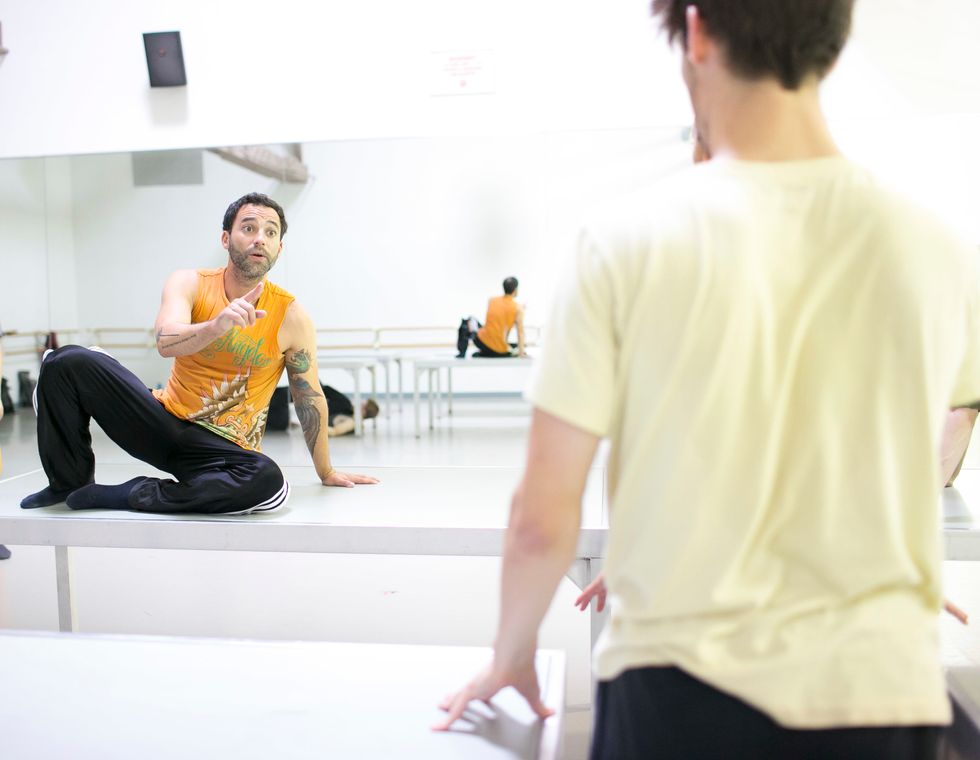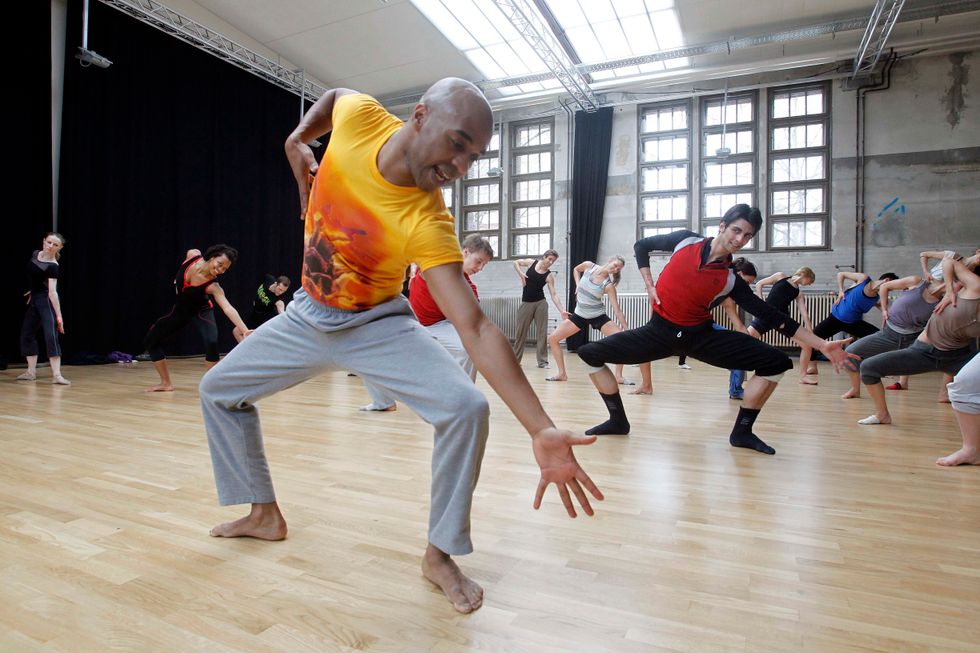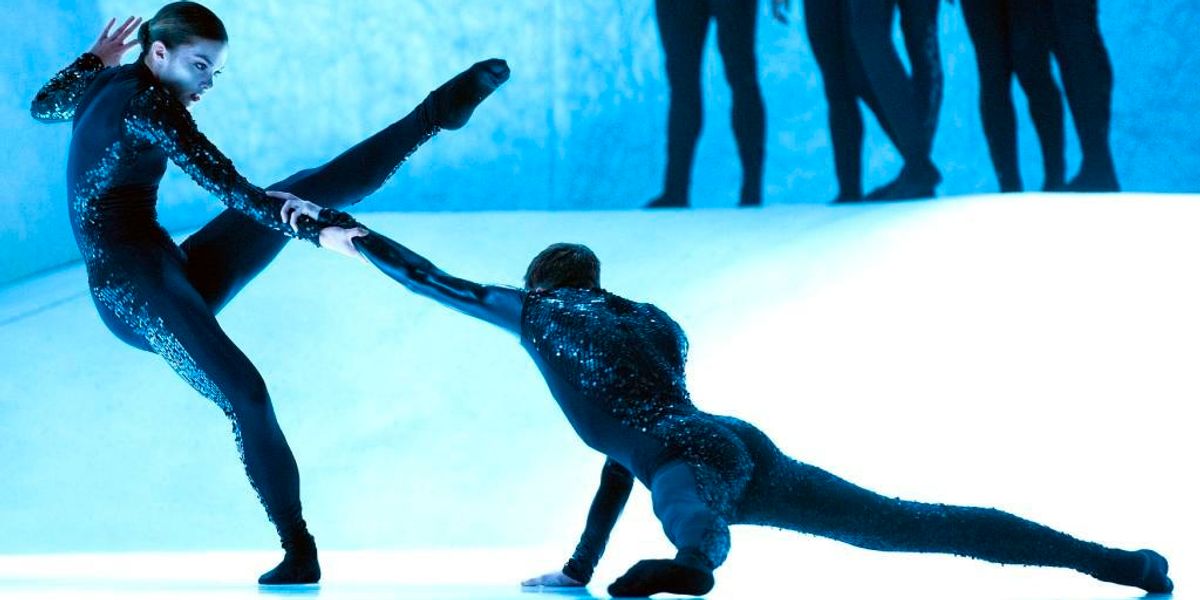Why Do Mixed-Rep Companies Still Rely on Ballet for Company Class?
In a single performance by a mixed-rep company, you might see its shape-shifting dancers performing barefoot, in sneakers and in heels. While such a group may have “ballet” in its name and even a rack of tutus in storage, its current relationship to the art form can be tenuous at best. That disconnect grows wider every year as contemporary choreographers look beyond ballet—if not beyond white Western forms entirely—in search of new inspiration and foundational techniques.
Yet dancers at almost all of the world’s leading mixed-rep ensembles take ballet classes before rehearsals and shows. Most companies rarely depart from ballet more than twice a week and some never offer alternative classes.
“The question, ‘Why do you take ballet class to prepare you for repertory which is not strictly classical?’ has been in the air since Diaghilev’s time,” says Peter Lewton-Brain, Monaco-based president of the International Association for Dance Medicine & Science. “What you’re doing onstage is often not what you’re doing in class.”
Thanks to campaigns for greater cultural and racial equity in the arts, many inspired or strengthened by Black Lives Matter, there’s more self-awareness today among those who might’ve once proudly declared that ballet is “the foundation of all dance.”
That’s a fallacy, but it rests on assumptions that remain in circulation, says Los Angeles–based Jermaine Spivey, staging artist for Crystal Pite and a regular performer with Kidd Pivot. “It’s centered around a white person’s idea of the world—a white person’s idea of abstract, a white person’s idea of conceptualism or expressionism, and then everything else is ‘included.’ We’re ‘diversifying,’ but we’re still based on the same principles as before. Everyone has to get comfortable with decentralizing whiteness and then ballet will fall where it needs to fall.”
Even some companies led by people of color see value in continuing to center the technique, however. “We understand fully there is a history of hierarchy, of white supremacy, in ballet,” says Ballet Hispánico artistic director and CEO Eduardo Vilaro. “That doesn’t mean it can’t be utilized.”
“Maybe there’s a fear that the ball will drop if we don’t take ballet every morning, that the rigor will fade,” says Mario Alberto Zambrano, associate director of the dance division at The Juilliard School. “Ballet has a clarity that we love, that we also hate,” he adds, with a laugh. “We need that tug-of-war between ‘It’s impossible, I can’t do it’ and ‘But I’m still gonna try today, and I’ll try again tomorrow.’ ”
Aside from ballet’s cultural and historical associations, some dancers say it no longer serves the purpose of companies whose versatility is the main draw. Spivey’s career began with two such ensembles: Ballet Gulbenkian and Cullberg Ballet. Class attendance at both was expected even when it seemed counterproductive.
“It felt frustrating to take a ballet class and then go learn something from Sidi Larbi Cherkaoui that asked me to be fully supple, give in to the floor, turn into a pretzel and stand back up—all in one count—when the first 90 minutes of the day hadn’t prepared me for that,” Spivey recalls. “A lot of us were trying to curate our own training and there was pushback for sure. People felt like they had to buck the rules.”
 Mario Alberto Zambrano in rehearsal at Hubbard Street Dance Chicago with, foreground, former company member Michael Gross.
Mario Alberto Zambrano in rehearsal at Hubbard Street Dance Chicago with, foreground, former company member Michael Gross.
Todd Rosenberg, Courtesy Zambrano
Those rules can be different in theory than in practice. U.S. ensembles unionized through AGMA and some international companies offer class as a service before the workday officially starts; contracts may stipulate that attendance is optional and unenforced, yet visiting choreographers may observe while casting, making class a de facto audition.
Members of mixed-rep companies often have different training backgrounds, and it can be a challenge to come up with 90 minutes that suit everyone, says Lara Barclay, rehearsal director at Ballet BC. “There are definitely dancers who’d love to take ballet five days a week, who feel it’s like putting on their favorite pair of socks. Other dancers need to wake up their brains differently. Some need to lie on the floor and feel gravity on their body in that way.”
Zambrano says he and his colleagues at Juilliard face a quandary as they strive to update its curriculum: Training the next generation of professionals in ballet helps them secure employment after graduation—at companies that center ballet because that’s how most of their current artists were trained.
“As a conservatory, we’re preparing dancers for the field, so then you have to ask, ‘What is the field?’ There’s a question here of how institutionally things are going to change, so that things are presented in a more equitable way,” he says. “I think we’ll continue to offer students Limón and Taylor and Graham and Gaga and William Forsythe’s Improvisation Technologies, but we’re trying not to refer to them as ‘patches in a quilt’ anymore. They’re more like threads in the same fabric, all speaking to each other in so many ways.”
But as contemporary choreography continues to diversify, there’s no simple swap for ballet, and it “does offer a kind of full package,” notes Barclay, who is also an expressive-arts therapist. “Live music, rhythmic and dynamic play, strength and stretch, turns and jumps. There’s variety not all training provides. Not all training includes turns.”
Barclay and Ballet BC’s new artistic director, Medhi Walerski, experiment with other options and this season will offer contemporary class once a week along with occasional classes in Feldenkrais. They add Gaga classes when rehearsals include work by Ohad Naharin or Gai Behar and Sharon Eyal (as those choreographers’ contracts mandate). In part to address the fact that dancers stop taking partnering classes once they start working, Barclay cultivated a relationship between the company and contact improvisation teacher Olivia Shaffer to offer occasional classes. This season, Ballet BC also plans to work with Indigenous dance artists Margaret Grenier and Starr Muranko.
For Emily Molnar, Ballet BC’s former and Nederlands Dans Theater’s current artistic director, class curation is a matter of mixology. “How do you take ballet and Gaga and put those together? How do you couple Flying Low with Improvisation Technologies? How do you create a diverse training opportunity for the artists so that, when they’re in conversation with a maker, they have all of these tools in their toolbox that they can access?”
When he was rehearsal director for Alvin Ailey American Dance Theater, Matthew Rushing hired and scheduled all the company’s teachers. He says it’s important to recognize—and easy to forget—that ballet is a living, malleable form.
“You embrace ballet differently based on where you are as a person,” says Rushing, now a choreographer for the company and its associate artistic director. “As my career took turns, my daily practices adjusted. But I will say that, for the most part, ballet was a foundation that I clung to and stayed with, no matter what other directions I went in. It’s more in how you’re teaching it and who you’re teaching it for.”
Vilaro says Ballet Hispánico looks for instructors who understand contemporary dance, who leverage ballet “not just for strength and line, but also for movement quality, beyond just the épaulement and the lift and all that good stuff. You also have to take cultural influences into account.” He says he hires teachers who understand non-white bodies, noting specifically his relationships with teachers from Ballet Nacional de Cuba. “Those immersed in cultures of color manipulate techniques to serve their bodies, whether consciously or not.”
Today, some dance scientists and physiologists are looking closely at the actions in a choreographer’s material to determine which joints and tissues will be stressed, so they can develop custom regimens for dancers to implement on top of their daily classes to prevent injuries. At Atlanta Ballet, physical therapists Mandy Blackmon and Emma Faulkner, partners in Atlanta Dance Medicine, develop unique programs ahead of, or in response to, the company’s presentations of contemporary choreography, so far by Ohad Naharin, Alexander Ekman and Juliano Nuñes.
For instance, Ekman’s Cacti “includes a lot of wide-legged kneeling, a lot of lifting and dancers holding cacti out in front of them for prolonged periods of time,” says Blackmon. “It’s not at all like classical ballet and not what they’re trained for. In football, if you’re a running back versus a defensive lineman, those players’ regimens are going to be very different. Yes, there’ll be some crossover in terms of conditioning and basic training, but the body still needs to be trained for what it’s expected to do.”
 Alvin Ailey American Dance Theater associate artistic director Matthew Rushing leads a workshop in Berlin
Alvin Ailey American Dance Theater associate artistic director Matthew Rushing leads a workshop in Berlin
Sven Darmer, Courtesy Ailey
There’s friction at mixed-rep companies between the constant novelty of the choreography and the consistency that athletes, dancers included, crave in their daily routines. But Barclay and Spivey suggest companies resist the urge to make every workday a variation on the same structural theme. “You can’t offer one class and have it be effective always,” says Barclay, whose routine as a freelancer included swimming, yoga, Pilates, Feldenkrais and Gyrotonic.
Companies that don’t diversify the training they provide their dancers, Spivey says, present repertory that doesn’t look quite as mixed onstage as it should. “What I see is homogenized movement, not because that’s what they’re trying to do, but because of how they’re working. It’s in the schedule. How much time is spent on training and research versus rehearsal? Why can’t those be the same thing?”
Rushing identifies Ronald K. Brown as one artist whose method answers that question. “He does a lot of his teaching in the process of choreographing and he’s not afraid to take the time to break down the technique of his work. I think he feels that the more you have his style and an understanding of the movement quality, the structure will follow.”
When a dancer’s workday consists of creating and learning material for as many as six hours, a predictable morning class “becomes a meditation in a way,” says Barclay. “You know you’ll do tendus in first and, after that, tendus in fifth. You can approach ballet in different ways, through your breath or musicality, but it’s always going to put you in the same kind of mode. Undoing patterns in order to get to that place a choreographer seeks is so important and that undoing—learning how to move in a different way—is also part of your training. If you give a dancer ballet class five days a week, can they find that? Can they discover that?”






